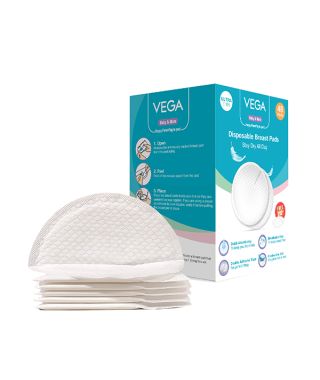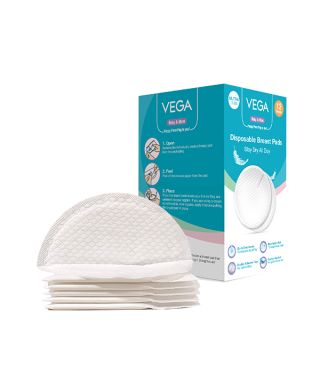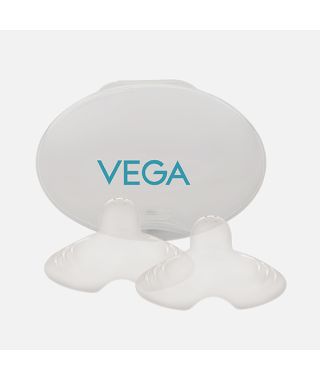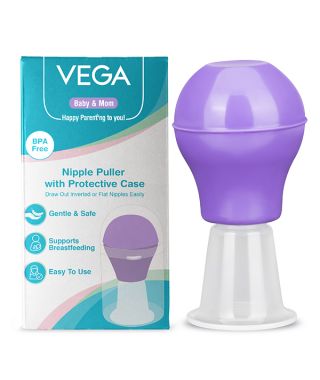Childbirth is an exuberating experience a new mother has. Imagine the joy and pride a mother feels when they nourish their baby through breast milk. It is of great joy to see your baby grow into a healthy individual. Vega Baby & Mom feels breastmilk is best for your baby and lays a healthy foundation of your baby’s life ahead.
As you take the first steps towards motherhood breastfeeding comes in instantly, like it happens within the very first hours of delivery and you don’t get time, nor have the energy to scroll through all of the information available online. So to make things easy and information accessible for breastfeeding moms here is the information about the different phases of breast milk a new mother expresses throughout her breastfeeding journey.
Here are the different phases of breast milk:
Colostrum- Birth To 3 Days
- It is a thick, yellowish fluid, the first milk after childbirth. It is also commonly known as liquid gold due to the immense benefits it brings to your baby’s health.
- It is rich in proteins, fat, soluble vitamins, and essential minerals.
- It contains less fat and lactose than mature breast milk which plays an important role in a baby’s development.
- It contains essential antibodies.
- It protects the baby against infection by supporting the baby’s immune system with the right nutrients.
- If you have flat nipples or If you feel you have a problem in latching your baby onto your breast, you can use a nipple puller to draw it out or you can hand express it till both you and your baby adapt to the process of latching. Since colostrum is thick it is advised to hand express it rather than pump it.
- Since colostrum is low in volume it is easy to digest by your baby’s digestive system that is still changing and growing.
- Do not offer anything else to the baby while they have colostrum milk as doing so may dilute the effects/benefits of colostrum.
- It helps remove the meconium, the first dark greenish tar-like poop.
- As it comes in small volumes it helps maintain the suck-swallow-breathe sequence that the baby is adapting to in the first few days of birth.
- The volume per feeding ranges from 2 to 20 ml, depending on the frequency of feeds done during the first 3 days of childbirth.
Note: Do not give honey or water to the newborn baby. We recommend exclusive breastfeeding upto 6 months.
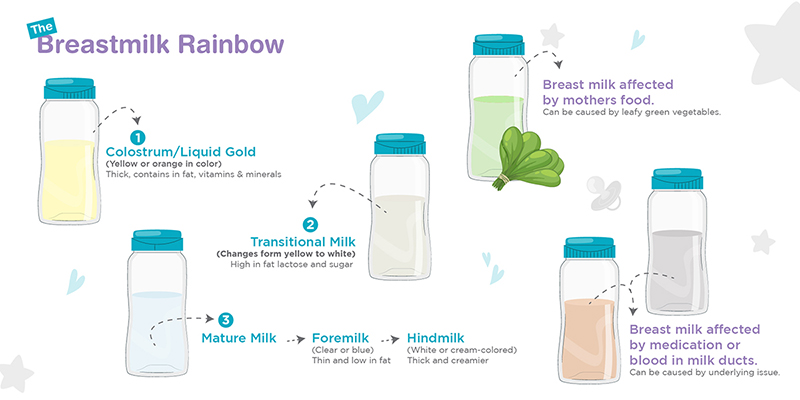
- Transitional milk – from 3 days to 2 weeks after birth
- It is creamy in consistency. It gradually changes color from yellowish to white.
- It is high in fat, lactose and sugar. It has low immunoglobins and proteins as compared to colostrum.
- Its consistency changes from thick to water-like over time.
- The Transitional breastmilk now increases in volume based on your baby’s feeding requirements and the volume now increases up to 600ml to 700ml as compared to the low volume colostrum.
- This will make your breasts feel fuller and heavier than the week prior.
- With the sudden rise in the volume of breastmilk you may sometimes leak breastmilk. You can try using Vega Baby & Mom Disposable Breast pads to keep yourself dry during such moments.
- If you are feeling heavier on your breasts you can also use a breastmilk pump for milk expression and use it later for feedings.
- During this phase your breasts are rapidly adapting to meet the growing needs of your rapidly growing baby.
- Transitional milk, gives your baby the much-required energy and brings satisfaction to them too.
- The enzymes and antibodies in milk change over time to strengthen your baby’s immune system further.
Mature milk – 2 weeks onwards
- It is the milk that comes in after the transitional milk phase.
- This milk is slightly thin in consistency as compared to the transitional milk. It is 90% water and 10% of it contains carbohydrates, proteins, and fats that will help provide energy to your baby.
- This milk is higher in volume but thinner as compared to transitional milk.
- It is perfectly balanced milk necessary for your baby’s health, growth, and development.
- It has nourishing and immune-protecting properties.
- It may be clear or bluish and thinner in consistency during the start of a feeding session (Foremilk). It gradually becomes more creamy (hindmilk) as the breastfeeding session ends.
Other Factors Affecting Breastmilk Color
Milk affected by Food – Strong naturally pigmented food such as beetroots, spinach, etc may affect the breastmilk color sometimes. It is not an indication of anything harmful.
Milk affected by medication- Certain medications intake by the mother can change the color of the breastmilk to brown or sometimes black. In such cases, it is advised to consult a doctor or a lactation expert and get the correct diagnosis if the problem persists.












